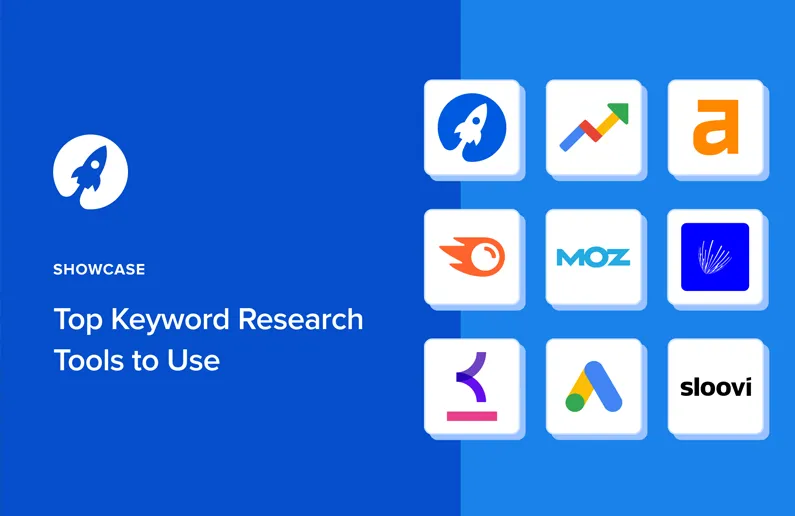
How to Build Customer Personas Using Google Analytics 4, Email Data, and Real-World Insights
Small businesses thrive when they truly understand their customers. One powerful way to gain this understanding is by creating customer personas – detailed profiles of your ideal customers. This comprehensive guide will show you how to build data-driven personas step-by-step using Google Analytics 4 (GA4), your email marketing/CRM data, and real-world insights. We’ll also clarify the differences between personas, segments, and customer journeys, and provide examples of customer personas for both e-commerce and service-based businesses. By the end, you’ll be equipped to turn raw data into actionable personas that can improve your marketing and customer experience.
What Is a Customer Persona (and Why It Matters)?
A customer persona (also called a buyer persona) is a detailed, semi-fictional representation of your target customer, informed by real data (analytics, surveys) and research. In practice, a persona includes key information about your ideal customer’s demographics (age, gender, location, etc.), behaviors, goals, challenges, and motivations. Rather than viewing customers as abstract data points, personas personify your audience as actual “people” – for example, “Social Media Sara, a 28-year-old marketing manager who loves TikTok and podcasts” (source).
Why do personas matter for a small business?
They help you personalize your marketing and product offerings to better meet customer needs. In fact, personalization is crucial: according to research, most marketers lack crucial information about their audience and struggle to create personalized content as a result (source). Well-developed personas fill that gap by capturing who your customers are and what they care about. This enables you to craft messages, website experiences, and products that resonate with real people, not generic “users.” Companies that use personas effectively see benefits like more engaging content, improved product development, and higher sales conversion rates (source).
In short, personas bring a human face to your data, ensuring you’re not marketing “to the void” (source) but to the needs and emotions of your best customers.
Persona vs Segment vs Journey – What’s the Difference?
It’s easy to confuse customer personas, customer segments, and customer journeys, since all three deal with understanding your audience. In a nutshell:
- Customer Persona: Who your customer is. A persona is a fictional profile representing a type of customer (with a name, story, and attributes) based on research and data. It focuses on the person’s background, needs, goals, and pain points.
- Customer Segment: What group you’re looking at. A segment is a grouping of actual customers who share certain characteristics or behaviors (e.g. age 25–34, same location, or purchase history). It’s a raw data-driven categorization without the personal story.
- Customer Journey: How the customer interacts with you over time. A journey is a visualization of the process or steps a person goes through to accomplish a goal with your business (from initial awareness to purchase and beyond).
Summary Table
| Factor | Customer Persona | Customer Segment | Customer Journey |
|---|---|---|---|
| Definition | A semi-fictional profile of an ideal customer, combining real data and research into a “person” with a name and story. | A group of customers defined by shared data points or traits (demographics, behaviors, etc.). | A visual map of the steps and interactions a customer goes through to accomplish a goal with your business. |
| Focus | Who the customer is – their background, needs, goals, motivations, and pain points (the human element). | What customers have in common – quantifiable attributes like age range, location, purchase frequency, channel, etc. | How the customer experience unfolds – the sequence of touchpoints, actions, thoughts, and emotions over time. |
| Purpose | To humanize your audience and cultivate empathy, guiding tailored marketing/content and product decisions. | To analyze and target groups for marketing or analysis (e.g. identify high-value segments for ads or specialized offers). | To improve customer experience by identifying pain points and opportunities at each stage (e.g. where customers drop off). |
| Example | Persona: “Social Media Sara,” a 28-year-old marketing manager who scrolls TikTok daily and values convenience and trends. | Segment: “Women age 25–34 in Florida who bought sandals in the last 6 months.” | Journey: The path Social Media Sara takes from seeing a TikTok ad to making a purchase and receiving a follow-up. |
|
As the table shows, personas are more detailed and empathetic, segments are data-driven groupings, and journeys are process-focused. All are useful: you might create personas first and then use them to define segments in Google Analytics, or map a journey for each persona. Next, we’ll dive into how you can actually build these personas using GA4 and other data sources.
How to Build a Customer Persona from Analytics (GA4) and Email Data
Building a persona is a blend of art and science. You’ll gather quantitative data (from Google Analytics 4 and your email/CRM platform) and qualitative insights (from real customer interactions) to paint a full picture. Follow these steps to create a data-driven customer persona:
Step-by-Step Guide to Build Personas
Step 1: Gather Demographics from GA4
Start with who your audience is at a high level. GA4’s Demographics reports can tell you the age, gender, location, and language of your users.
- Enable Google Signals in your GA4 property (Admin → Data Settings → Data Collection).
- Go to Reports > User > Demographic details.
- Look at:
- Age & Gender: Which groups have the highest engagement or conversion?
- Location & Language: Where are your most valuable users from?
- Interests (if enabled): What are users interested in beyond your site?
Use this to define basic traits for your personas.
Step 2: Analyze Behavior and Engagement in GA4
Now identify what your audience does on your site.
- Go to Reports > Engagement > Pages and Screens.
- Find which content they view the most.
- Use Average Engagement Time, Engagement Rate, and Conversions to determine how engaged each user segment is.
- For eCommerce: use Monetization > E-commerce purchases to identify high-performing product segments.
These patterns reveal behavior types (e.g. “impulse buyer” vs. “researcher”).
Step 3: Examine Key Traffic Sources
GA4’s Acquisition reports show where your audience comes from.
- Reports > Acquisition > Traffic acquisition
- See whether users come from organic search, social media, referral, or direct.
- This shows how discovery and intent vary by persona.
- Use device and browser reports under User > Tech to identify user habits (e.g. mobile-first behavior).
These clues help shape preferences, intent, and lifestyle traits for personas.
Step 4: Integrate Email and CRM Data
Use first-party data to enrich what GA4 can’t see.
- Segment your audience by:
- Engagement (open rates, click-through rates)
- Product/service interest
- Lifecycle stage
- Review past purchases or service records for trends.
- Use contact notes or survey responses to identify patterns.
This connects real customer records to abstract behavior data.
Step 5: Add Real-World Insights
Round out each persona with qualitative input:
- Conduct surveys with open-ended questions about needs and challenges.
- Interview customers who represent your best segments.
- Review testimonials and social media comments.
- Ask your team (sales, support, etc.) what common traits they notice.
These emotional drivers give your personas clarity and depth.
Step 6: Draft Your Persona Profile
Summarize each persona as a 1-page snapshot:
- Name + Backstory: Make it realistic and relatable.
- Demographics: Age, location, role, income.
- Goals + Pain Points: What do they want? What’s in their way?
- Behaviors: How they find you, what they do, and how they prefer to engage.
- Quote or Hook: A memorable line that captures their worldview.
You can now build a strategy around people who actually exist—not assumptions.
Examples of Customer Personas
E-commerce Persona: “Savvy Sophia”
- Female, 25–34, active on Instagram and mobile shopping.
- Shops during evenings and weekends, values fast shipping and trendy items.
- Responds well to influencer content and discount codes.
Service Business Persona: “Practical Pete”
- Male, 50+, prefers to call rather than use online forms.
- Seeks reliability, local expertise, and clear guarantees.
- Finds businesses through local SEO and word-of-mouth.
Putting Personas into Action
- Align messaging, content, and UX to fit personas’ needs.
- Use GA4 segments and email tagging to test marketing performance.
- Update personas periodically as new data and trends emerge.
Conclusion
Personas let you market smarter by aligning content and experiences with real customer behavior and needs. Using GA4, email insights, and real-world input, you’ll be equipped to make better decisions, connect more deeply with your audience, and grow your business sustainably.




